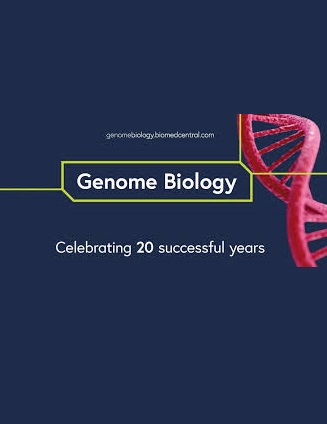综合大规模元基因组组装和多王国网络分析发现人类鼻腔微生物组的性别差异
IF 10.1
1区 生物学
Q1 BIOTECHNOLOGY & APPLIED MICROBIOLOGY
引用次数: 0
摘要
呼吸道疾病给全世界造成了巨大的健康负担。流行病学研究显示,男女在呼吸道感染的发病率和严重程度上存在巨大差异。据推测,鼻腔微生物组轴也可能是造成所观察到的性别差异的原因之一。在这里,我们利用霰弹枪元基因组测序技术,对迄今为止最大的 1593 名健康年轻人的鼻腔微生物组进行了研究。我们为鼻腔细菌群落编制了最全面的参考目录,其中包含 4197 个元基因组组装的基因组,并整合了真菌生物群,为研究不足的人类鼻腔微生物群提供了宝贵的资源和更全面的视角。我们系统地评估了性别差异,并揭示了鼻腔微生物组在分类学和功能水平上广泛的性别特异性特征。通过网络分析,我们发现女性鼻腔微生物组的生态稳定性和拮抗潜力明显高于男性。对关键细菌的分析表明,性别依赖性进化特征可能是造成这些差异的原因。总之,我们为鼻腔细菌群落构建了最全面的元基因组组装基因组目录,为研究不足的人类鼻腔微生物群落提供了宝贵的资源。此外,相对丰度和微生物共存网络的比较分析发现了呼吸道群落中广泛的性别差异,这可能有助于我们进一步了解呼吸道疾病中观察到的性别差异。本文章由计算机程序翻译,如有差异,请以英文原文为准。
Integrated large-scale metagenome assembly and multi-kingdom network analyses identify sex differences in the human nasal microbiome
Respiratory diseases impose an immense health burden worldwide. Epidemiological studies have revealed extensive disparities in the incidence and severity of respiratory tract infections between men and women. It has been hypothesized that there might also be a nasal microbiome axis contributing to the observed sex disparities. Here, we study the nasal microbiome of healthy young adults in the largest cohort to date with 1593 individuals, using shotgun metagenomic sequencing. We compile the most comprehensive reference catalog for the nasal bacterial community containing 4197 metagenome-assembled genomes and integrate the mycobiome, to provide a valuable resource and a more holistic perspective for the understudied human nasal microbiome. We systematically evaluate sex differences and reveal extensive sex-specific features in both taxonomic and functional levels in the nasal microbiome. Through network analyses, we capture markedly higher ecological stability and antagonistic potentials in the female nasal microbiome compared to the male’s. The analysis of the keystone bacteria reveals that the sex-dependent evolutionary characteristics might have contributed to these differences. In summary, we construct the most comprehensive catalog of metagenome-assembled-genomes for the nasal bacterial community to provide a valuable resource for the understudied human nasal microbiome. On top of that, comparative analysis in relative abundance and microbial co-occurrence networks identify extensive sex differences in the respiratory tract community, which may help to further our understanding of the observed sex disparities in the respiratory diseases.
求助全文
通过发布文献求助,成功后即可免费获取论文全文。
去求助
来源期刊

Genome Biology
Biochemistry, Genetics and Molecular Biology-Genetics
CiteScore
21.00
自引率
3.30%
发文量
241
审稿时长
2 months
期刊介绍:
Genome Biology stands as a premier platform for exceptional research across all domains of biology and biomedicine, explored through a genomic and post-genomic lens.
With an impressive impact factor of 12.3 (2022),* the journal secures its position as the 3rd-ranked research journal in the Genetics and Heredity category and the 2nd-ranked research journal in the Biotechnology and Applied Microbiology category by Thomson Reuters. Notably, Genome Biology holds the distinction of being the highest-ranked open-access journal in this category.
Our dedicated team of highly trained in-house Editors collaborates closely with our esteemed Editorial Board of international experts, ensuring the journal remains on the forefront of scientific advances and community standards. Regular engagement with researchers at conferences and institute visits underscores our commitment to staying abreast of the latest developments in the field.
 求助内容:
求助内容: 应助结果提醒方式:
应助结果提醒方式:


